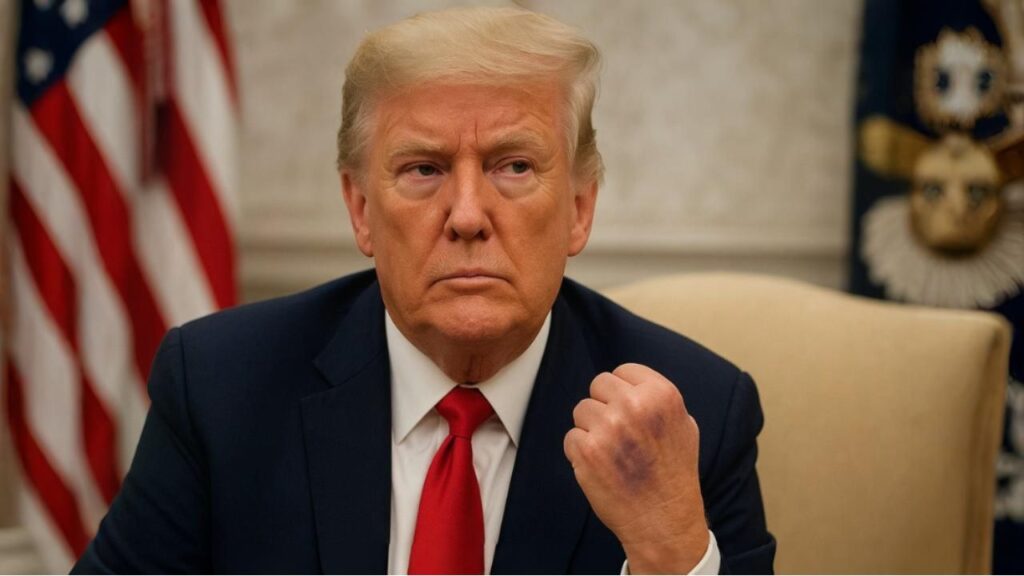
At 79, Trump is the oldest sitting US President to serve a second term, while Vance, 41, is the third-youngest Vice President in American history.
On Saturday, August 30, the phrase “Trump is dead” shot to the top of trending topics on X (formerly Twitter), generating more than 57,000 posts and setting off a storm of speculation about the health of the 79-year-old US President.
The trend sparked heated online debates, conspiracy theories, and memes, but also raised serious questions about President Donald Trump’s health, his recent public absence, and whether the White House is doing enough to address growing concerns.
Here’s a breakdown of what happened, why the rumours gained traction, and what we know so far.
Why was “Trump is dead” trending?
The speculation began after Trump remained out of public view for over 72 hours. He was last seen at a three-hour White House cabinet meeting on Tuesday. Since then, hashtags like #TrumpIsDead, #WhereIsTrump, and #HesDead dominated X timelines.
Fueling the frenzy were viral images of Trump with bruises on his right hand and visible swelling around his ankles. Some photos appeared to show heavy makeup covering the bruises, intensifying chatter about whether the President’s team was hiding something.
This is not the first time Trump’s health has been in the spotlight. In July, the White House had already confirmed that the President was suffering from a medical condition.
Trump’s medical diagnosis
In mid-July, the White House released a memo from the President’s physician, Dr Sean Barbabella, stating that Trump had been diagnosed with chronic venous insufficiency (CVI) a condition in which blood flow in the leg veins is impaired, causing swelling and bruising.
According to the memo, “Bilateral lower extremity venous Doppler ultrasounds revealed chronic venous insufficiency, a benign and common condition, particularly in individuals over the age of 70.”
Dr Barbabella further clarified that the bruises on Trump’s hand were consistent with “soft tissue irritation from frequent handshakes and aspirin use” and showed no evidence of serious vascular disease.
In other words, Trump’s doctors maintain that his condition is not life-threatening.
Vice President’s comment added fuel
Speculation about Trump’s health picked up further after Vice President JD Vance made a remark during an interview with USA on August 27.
Asked about his role, Vance said he was prepared to lead if necessary. “I’ve gotten a lot of good on-the-job training over the last 200 days. And if, God forbid, there’s a terrible tragedy, I can’t think of better on-the-job training than what I’ve gotten,” he said.
Although Vance also stressed that Trump was “in incredibly good health” and continued to work late nights and early mornings, his words were widely interpreted online as an indirect admission that the President’s health was fragile.
At 79, Trump is the oldest sitting US President to serve a second term, while Vance, 41, is the third-youngest Vice President in American history.
Social media rumours vs reality
The rumours gained traction largely because of Trump’s temporary absence from public events. However, it is worth noting that he has not been entirely invisible.
In fact, Trump posted on his platform Truth Social at 3:40 am on Saturday (Washington DC time), reacting to a US Appeals Court ruling against his tariffs on countries, including India. This post, however, did little to stop speculation, with many users insisting it could have been uploaded by his staff.
Meanwhile, the White House has stayed largely quiet, apart from reiterating the President’s good health through official memos and press briefings.
Press Secretary Karoline Leavitt dismissed the rumours, saying: “President Trump is a man of the people, and he meets more Americans and shakes their hands daily than any other President in history. His commitment is unwavering, and he proves that every single day.”
Why Trump’s hand keeps making headlines
This is not the first time Trump’s bruised hand has been noticed. Photographs earlier this year, from meetings with French President Emmanuel Macron in February and European Commission President Ursula von der Leyen in July, also showed discolouration on his hand.
On both occasions, speculation about his health surged online before the White House clarified the bruises were minor and related to routine aspirin use.
But the repeated appearances of the bruising and attempts to conceal them with make-up have kept the topic alive on social media.
What is Chronic venous insufficiency (CVI)
Chronic venous insufficiency (CVI) is fairly common among older adults. Medical experts note that while it can cause swelling, pain, or skin changes, it is usually manageable and not fatal.
The main treatments involve lifestyle adjustments, compression stockings, or minor medical interventions. For a 79-year-old President, however, even a minor diagnosis tends to attract disproportionate scrutiny, especially given the demands of the office.
Why this matters politically
Trump’s health is not just a personal matter; it has political implications. With the 2026 midterms approaching, speculation about his fitness to serve could shape public opinion and impact his party’s momentum.
Moreover, his Vice President’s readiness to step in, while perhaps routine, has only amplified the narrative that Trump’s age and health could become decisive issues in the coming months.
The bottom line
For now, the rumours about Trump’s death remain just that, unverified social media speculation. The President’s medical team continues to describe his condition as benign, while Trump himself remains active online, if not always in public view.
Yet, the incident highlights a growing reality of modern politics: in the age of social media, even the smallest detail, a bruise, a comment, or a brief absence, can spiral into a full-blown global trend.
Even after White House denials, “Trump Is Dead” has become the latest viral trend, keeping speculation about the President’s health alive.






